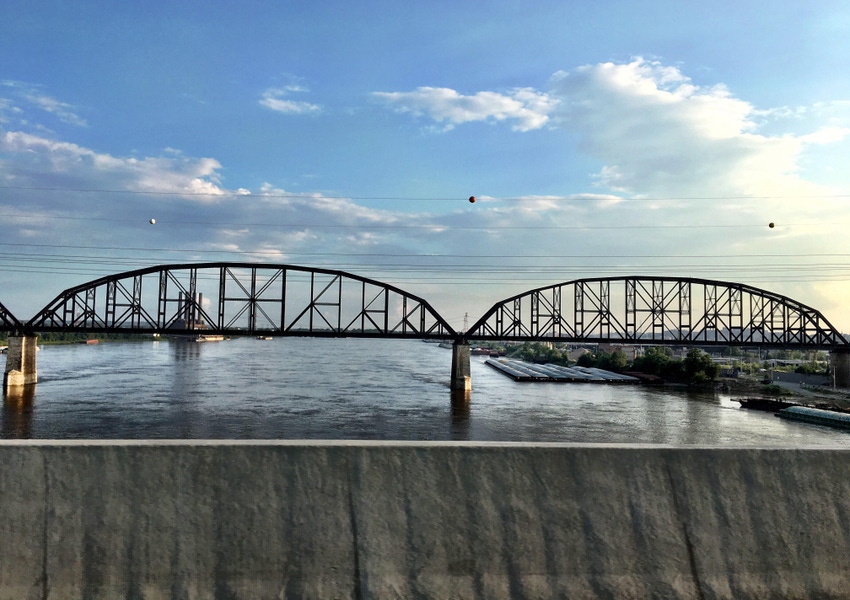Research identifies benefit of dredging Lower Mississippi River
Evaluated states would receive additional $461 million annually for their soybeans.

As real and potential threats confront U.S. agriculture in general and the soybean industry in particular, identifying opportunities to enhance farmer profitability is essential. To cost-effectively and reliably access domestic and international markets, U.S. soybean farmers rely on a multi-modal transportation system comprised of rural roads and bridges, highways and interstates, freight railroads, inland waterways and ports.
While sufficient levels of investment must be directed to each of these essential modes, a recent analysis by the Soy Transportation Coalition (STC) highlighted that one particular infrastructure enhancement could significantly improve the competitiveness of the U.S. soybean industry and individual farmer profitability.
The 256-mile stretch of the Mississippi River from Baton Rouge, La., to the Gulf of Mexico accounts for 60% of U.S. soybean exports and 59% of corn exports – by far the leading export region for both commodities.
To underscore the importance of the waterway, STC said there is a growing effort among Mississippi River stakeholders, including in agriculture, to promote the dredging of the lower river shipping channel from 45 ft. to 50 ft. in depth. The STC report – performed by Informa Economics IEG – was designed to increase the understanding and awareness of the benefit of this potential project to the U.S. soybean industry.
The research showed that shipping costs for soybeans from Mississippi Gulf export terminals would decline 13 cents/bu. ($5 per metric ton) if the lower Mississippi River was dredged to 50 ft. A deeper river will allow larger ships to be utilized while currently utilized ships could be loaded with more revenue-producing freight, STC noted.
The research also highlighted the impact on the interior basis – the difference between the local price a farmer receives and the market value established by the Chicago Board of Trade – for soybeans in 31 states if the lower Mississippi River shipping channel is dredged.
STC directed the researchers to produce basis maps for soybean-producing states located adjacent to navigable inland waterways, highlighting the current situation and how the basis could improve for soybean farmers if the lower Mississippi River shipping channel is dredged to 50 ft.
What the research found was that areas of the state of Illinois enjoying a positive or slightly negative basis would expand if dredging to 50 ft. was done. It was estimated that this would provide over $77 million more to Illinois soybean farmers for their crop. This dynamic would be replicated in other soybean-producing states along the inland waterway system, STC explained.
“One of the main reasons soybean farmers in my area of the country can remain profitable is due to our access to the Ohio and Mississippi rivers,” said STC chairman Gerry Hayden, a soybean farmer from Calhoun, Ky. “Our research highlights that dredging the Lower Mississippi River will improve the supply chain for those soybeans being loaded onto the river and eventually exported from the Mississippi Gulf region. This more efficient supply chain will translate to more profitable soybean farmers.”
While the research projected that Illinois would see the largest benefit, the STC research estimated that farmers in the 31 states evaluated would receive an additional $461 million for their soybeans annually due to the dredging.
“While those states located in close proximity to the inland waterway system will realize the most benefit, states further removed will also benefit from the increased modal competition between rail and barge,” STC said, explaining that when modal competition increases, downward pressure on shipping rates often occurs. With barge transportation becoming more viable for a larger percentage of the soybean-producing areas of the country, there will be a greater degree of overlap between areas served by railroads and barge, and soybean shippers will benefit from this modal competition, STC said.
“Things like weather can inhibit supply, and geopolitical forces can impede demand, but the barrier to improving our transportation system that connects supply with demand is all too often a lack of will,” STC executive director Mike Steenhoek said. “All too often, infrastructure investment is allowed to become a theoretical issue.”
The STC research clearly explains how this single infrastructure enhancement will have tangible benefit to individual farmers in individual states throughout the country, he added.
“If our nation desires to make our farmers more competitive in a turbulent marketplace, this investment would be an excellent place to start. May we have the will to do so,” Steenhoek said.
About the Author(s)
You May Also Like



